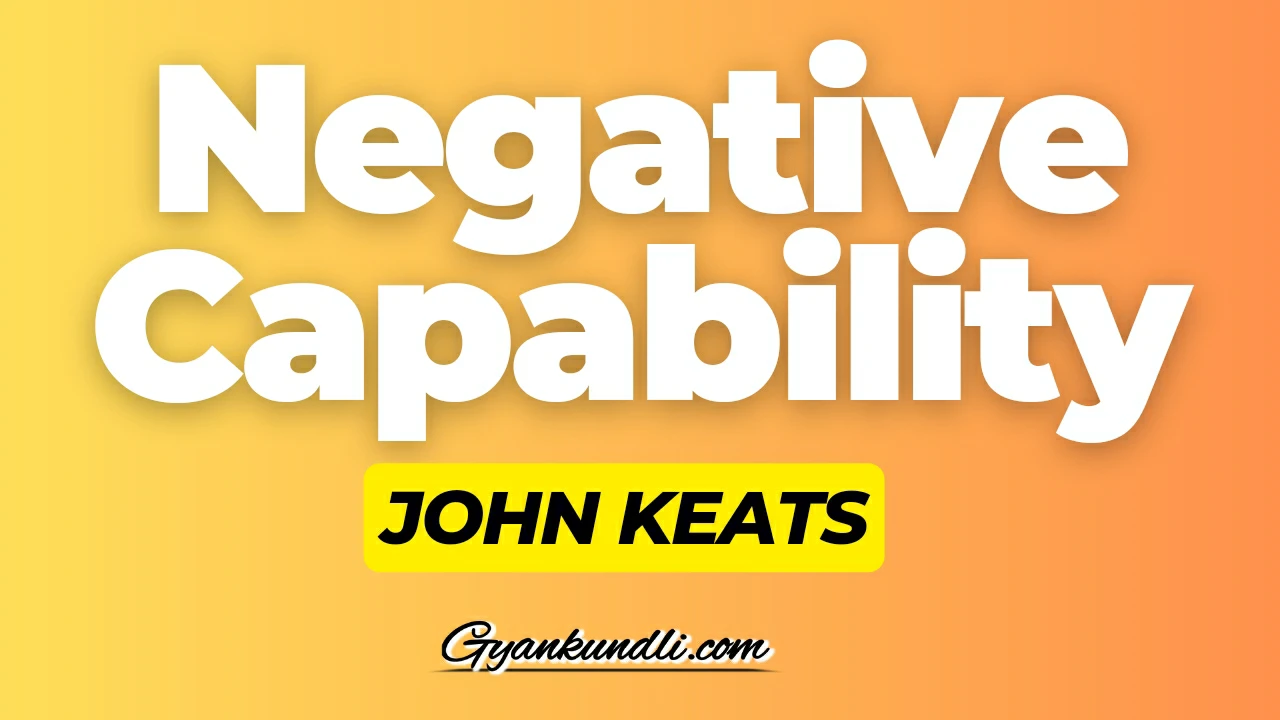What is Negative Capability?
Negative capability, a concept crafted by the renowned Romantic poet John Keats in 1817, explores the essence of artistic creation, particularly in the literature. Keats marveled at Shakespeare’s unparalleled ability to embrace uncertainties, mysteries, and doubts without striving for concrete facts or reason, as he expressed in a letter to his brothers. This unique attribute, negative capability, embodies the poet’s capacity to transcend self-awareness and immerse oneself in a state of openness to all experiences.
Keats emphasized the power of beauty as a guiding force, prioritizing it over the pursuit of objective truth. His famous line, “Beauty is truth, truth beauty’—that is all / Ye know on earth, and all ye need to know,” encapsulates this sentiment from his “Ode on a Grecian Urn.” Beyond aesthetics, the notion of negative capability resonates across disciplines, inspiring scholars like Roberto Unger in their explorations of social theory.
For Keats, the essence of negative capability lies in the poet’s ability to shed the confines of ego and merge with the object of contemplation. He drew inspiration from William Hazlitt‘s portrayal of Shakespeare as the epitome of selflessness, capable of embodying diverse perspectives with unparalleled empathy. In his letters, Keats celebrated the poet’s capacity for total immersion, allowing them to inhabit various roles and experiences without constraint.
In essence, negative capability celebrates the artist’s capacity to embrace ambiguity and uncertainty, transcending the confines of logic and reason to unlock the boundless beauty of artistic expression. It invites creators to relinquish the ego, immerse themselves in the vast shade of human experience, and embrace the transformative power of artistic empathy.
FAQs about Negative Capability:
- What is Negative Capability according to John Keats? – Negative Capability, as described by John Keats, is a writer’s ability to embrace uncertainties, mysteries, and doubts without seeking concrete facts or reasons. It’s about being open to all experiences without the pressure of logic or science.
- Who first used the term Negative Capability? – The term Negative Capability was first used by the Romantic poet John Keats in an 1817 letter to his brothers George and Thomas.
- How does Negative Capability relate to artistic creation? – Negative Capability emphasizes the importance of artistic beauty over philosophical certainty. It allows writers to access truth and beauty without being constrained by rigid frameworks or the pursuit of objective facts.
- Why is Shakespeare often associated with Negative Capability? – Shakespeare is often linked to Negative Capability because of his ability to pursue artistic beauty even in the face of intellectual confusion and uncertainty. He epitomizes the capacity to look into complexities without seeking concrete answers.
- How does Negative Capability influence the perception of truth and morality in literary works? – Literary works imbued with Negative Capability may transcend conventional considerations of truth and morality. They possess beauties and depths that make traditional notions of truth and morality irrelevant, focusing instead on the inspirational power of beauty and artistic expression.
Also Read : Go and Catch a Falling Star Question Answer : 50 One-liners
